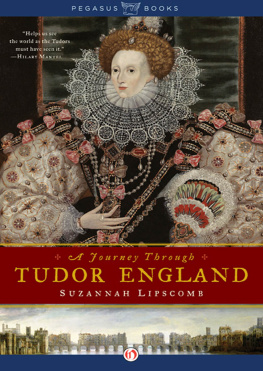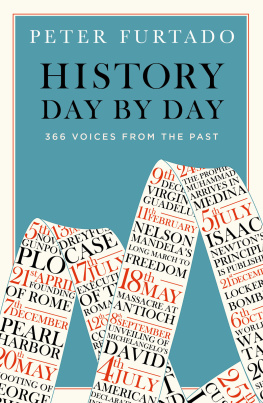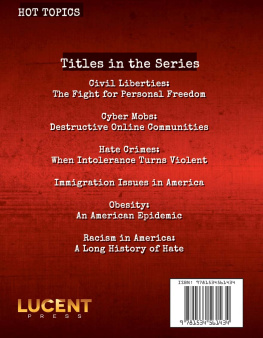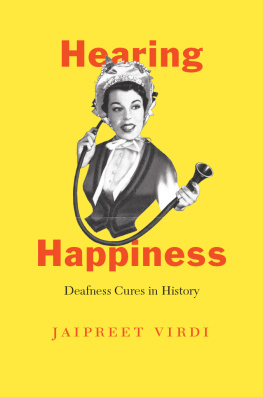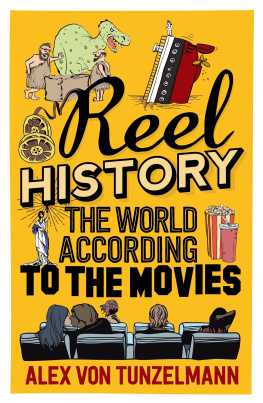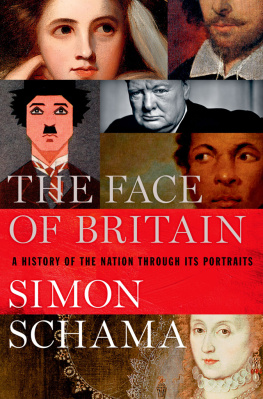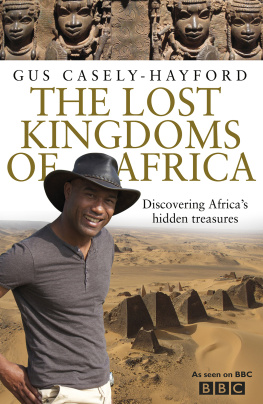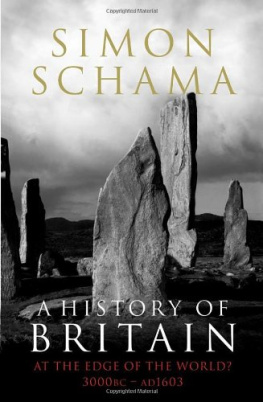For our children
Contents
Helen Carr
History consists of a corpus of ascertained facts. The facts are available to the historian in documents, inscriptions and so on, like fish on the fishmongers slab. The historian collects them, takes them home, and cooks and serves them in whatever style appeals to him.
E.H. Carr, What is History? (1961)
In 1961, Edward Hallett Carr gave a series of lectures at the University of Cambridge which he called What is History? His leading intention was to demonstrate that, like fish on the fishmongers slab, facts are served as the historian wishes to serve them and that history is by and large interpretive. This theory was so popular, groundbreaking and revolutionary in its time, that What is History? was compiled into a book that quickly became a key text for generations of history students and historians thereafter. Carrs work was so popular it was republished as a Penguin Classic in 2018. I am a historian who has been influenced by Carrs key text but his influence on me perhaps goes a little further, for E.H. Carr was my great-grandfather.
My memories of history and the learning of history were enhanced by the omnipresent familial legacy of E.H. Carr, nicknamed the Prof but known affectionately as Ted. He died six years before I was born, but his energy has lived on within our family and encouraged my insatiable interest in history, prompting an imagined dialogue with my great-grandfather, one of our greatest and most influential historians and thinkers. I am fortunate enough to observe the work he has carefully and thoughtfully created take its place on the grand stage of History, and I share with his son (my grandfather) John the hope that it will stimulate further study and understanding of the future way forward in the world. This collection of voices is inspired by What is History? and serves as a tribute to Carrs timeless work but it is also an olive branch to those who have felt pushed out or marginalised from history and the way we talk about it. What is History, Now? argues loudly that history belongs to us all and by making space for all histories, we can perhaps begin to understand a much deeper, broader past.
Helen Carr
Cambridge, March 2021
Mary Queen of Scots was beheaded on 8 February 1587 at Fotheringhay Castle in Northamptonshire. She laid her head upon a block and, after a couple of awkward and bloody attempts, her head was struck from her body. This macabre fact about Mary Queen of Scots is the first history fact I, Helen, remember from probably the age of four or five as I ambled about the ruins of Fotheringhay Castle on a day out with my father. For some reason, it gripped me. Apparently I forced him to return to Fotheringhay regularly to ascertain the exact location of the beheading (the centre of the Great Hall, for those who want to know).
Saturdays in my childhood were mostly spent like this. These adventures trips to castles, houses, churches, cathedrals, monuments, ancient stones were how I became fascinated with the past. I sought out history elsewhere. In nature: wondering how old is the oldest tree and was it around at the same time as Henry VIII? In movies: I watched Braveheart far too young and thought it was magical. And in landscape and myth: I grew up nearby the Avebury Stones, the little sister of Stonehenge. Here, I dreamed about Merlin and wondered where Excalibur was now.
This type of history excited me far more than the history that was offered at school, which I found strangely disappointing. School history didnt fit with my version of history. My history was more than facts and dates; it was the feeling of the past, the myth, the magic, the stuff we didnt know. All of this was my way into history.
For reasons of adoption or possibly short memories, the histories that came down to me, Suzannah, as a child were all on one side of my family. Tracing the patrimonial line takes the family back to Richard Lipscomb, baptised in Portsmouth at the parish church in September 1668, who later drowned in the harbour, having possibly fallen off the pier when drunk. (Late last year, a distant Lipscomb relative sent me a portrait of him. Wearing a white wig over a shaved head you can detect the faintest shadow of his natural hairline and dressed in a modest, matching coat and waistcoat of brown wool over a linen shirt with cravat or frills made of very fine, transparent lawn, he looks likely to have been a moderately wealthy merchant someone rich enough to have his portrait painted, but not by a painter who could do hands.) I have a well-used wooden chopping board, with ears of wheat and the initials J.T. Lipscomb A.D. 1851 in relief carving around the rim, which must have belonged to his grandson, John Thomas Lipscomb. Then theres a line of Fredericks, including poor Rev. Frederick Bell Lipscomb who, at the age of forty-six, had been paying a visit to a fellow clergyman in a neighbouring village and was returning home on his bicycle when, a local newspaper tells me, a pony, then being harnessed in the stable of a public house, suddenly rushed into the road and collided with him. Frederick Bell was violently thrown to the ground and never regained consciousness. He left a widow and five children. One of those was my great-grandfather, who, like many of his era, spent most of his distinguished career in India, as a doctor in the Royal Army Medical Corps. He was one of the first medics into the liberated concentration camp at Belsen. He died eight years before I was born, and I am writing this at his desk.
These family histories were one reason why the past seemed so alluring to me growing up. I didnt realise until much later that the pursuit of genealogy invariably means losing track of the women; as far as family trees are concerned, they birth sons and die. But the fables about these almost tangible relatives gave me an odd, indefinable thrill. They made the past seem both remote and, quite literally, familiar. This was my way into history.
As we write, history is hot stuff. It is the focus of hot-off-the-press news, the subject of heated debate or, at least, so were led to believe and some people express fears that its being stolen. But how hot are we on what history actually is?
In March 2021, the Daily Telegraph ran a piece with the headline, Soviet universities are fictionalising history. It reported that Universities Minister Michelle Donelan had said, The so-called decolonisation of the curriculum is, in effect, censoring history. As a history student, Im a vehement protector and champion of safeguarding our history. It otherwise becomes fiction, if you start editing it, taking bits out that we view as stains. She went on, most of the narrative that is coming out is about removing elements of history, about whitewashing it, and pretending it never happened, which I just think is naive, and almost irresponsible. She compared such behaviour to practices in China and the Soviet Union.
The idea of removing the troubling bits from history is itself very troubling; that universities might be fictionalising or censoring history should alarm anyone. But is that what is happening? Decolonising the curriculum involves considering histories of race, empire and slavery; not perpetuating imperialist attitudes; and attending to historical experiences beyond those of the (usually) white colonisers. It is about diversifying the voices included in history rather than censoring them, about examining the stains on history rather than taking bits out. As Priyamvada Gopal writes, it is instead about putting the offensive bits BACK IN. In other words, it means almost exactly the opposite of what Donelan seems to think it means. But it is Donelans insistence that what she said was as a history student and a champion of safeguarding our history that requires our special attention. It suggests we need to think more about what history is.
Next page


